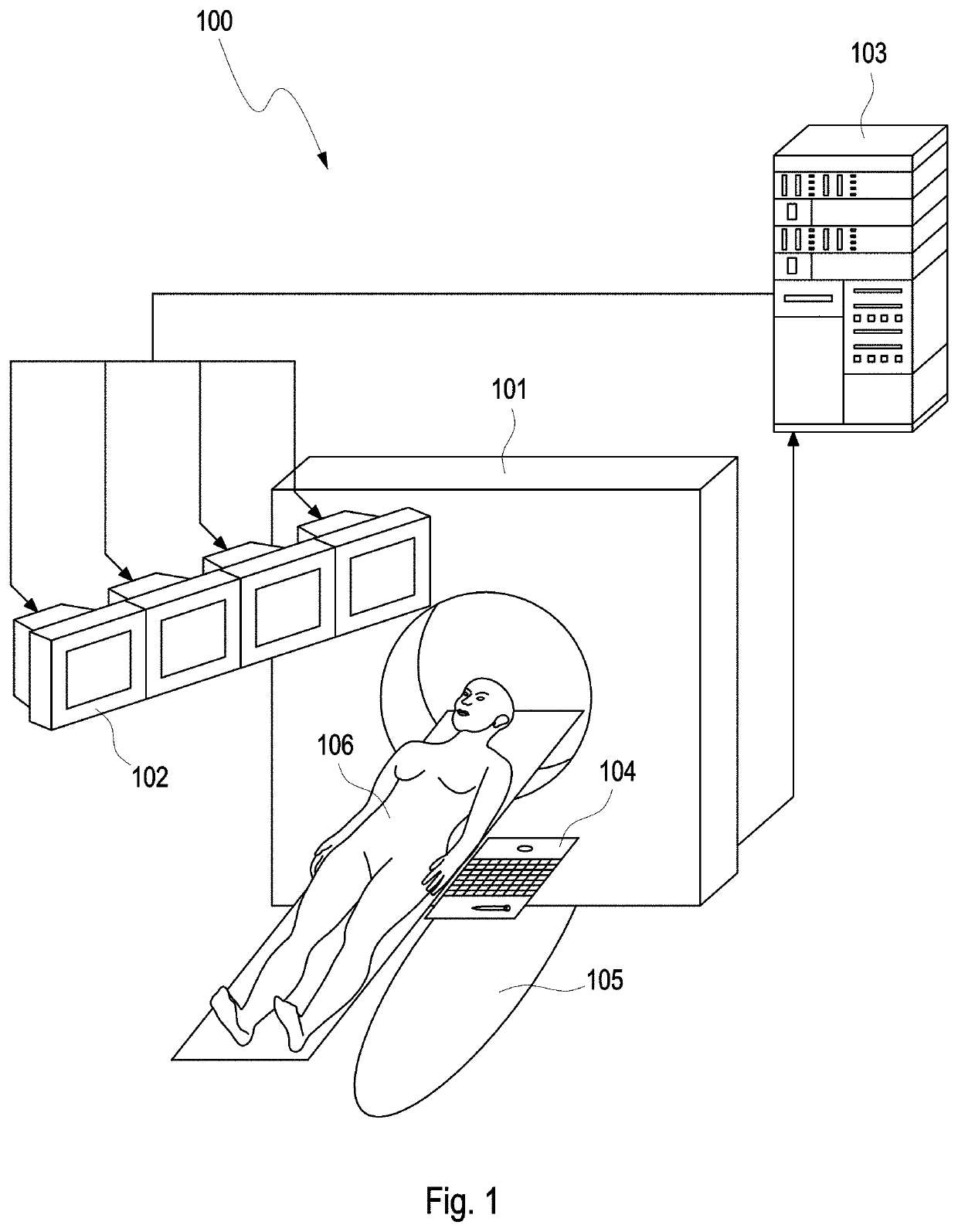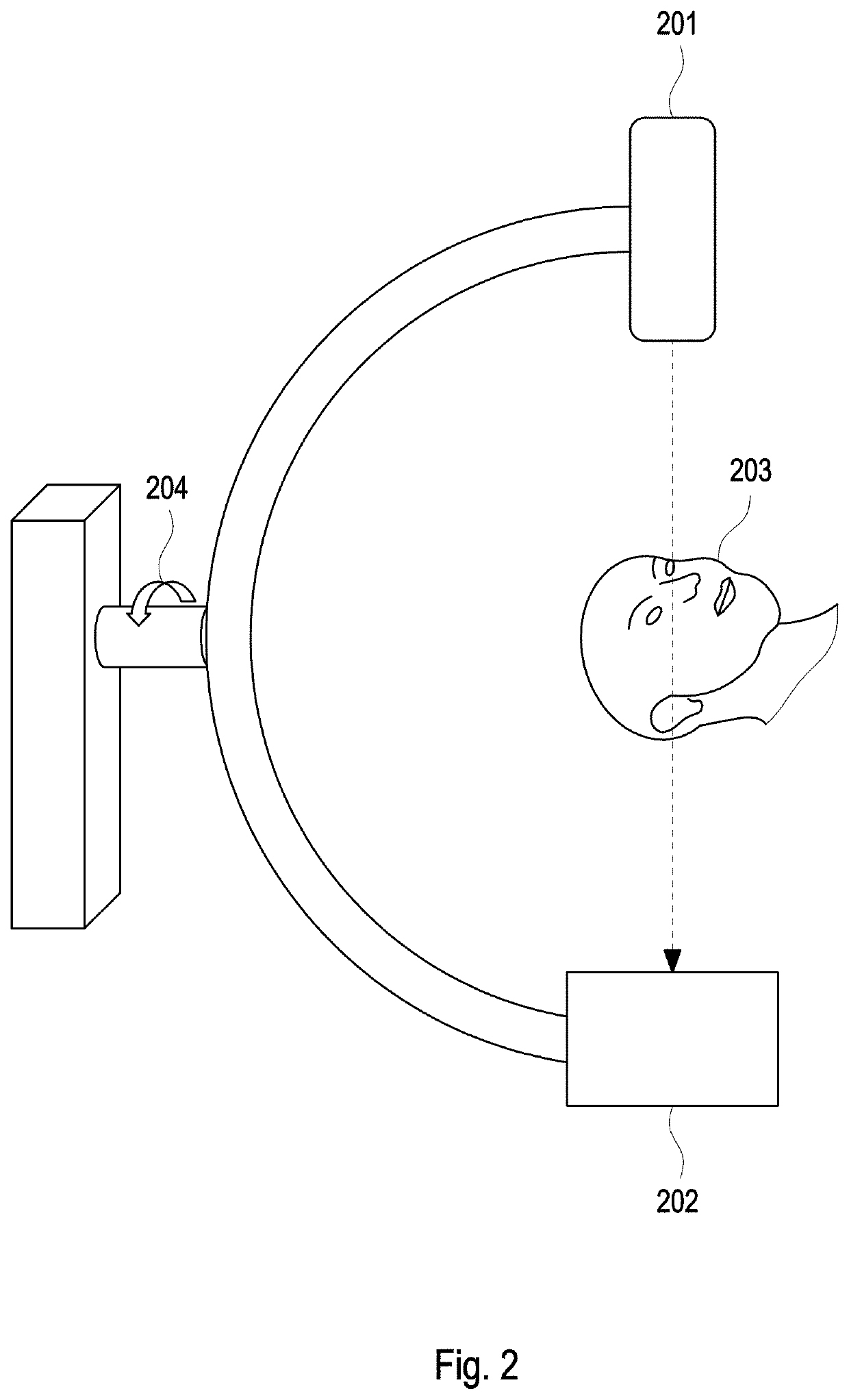Method and system for 4D radiological intervention guidance (4D-cath)
a radiological intervention and guidance technology, applied in the field of imaging methods for radiologically guided instruments, can solve the problems of mr imaging still requiring special arrangements, interventionists with a high degree of uncertainty regarding the position of instruments and current surroundings, and radiologically guided interventions are currently limited by known imaging methods, etc., to avoid excessive radiation dose for patients, improve radiological guided interventions, and avoid the effect of excessive radiation dos
- Summary
- Abstract
- Description
- Claims
- Application Information
AI Technical Summary
Benefits of technology
Problems solved by technology
Method used
Image
Examples
Embodiment Construction
>[0070]FIG. 1 shows an exemplary configuration of the 4D-CATH lab including a CT scanner 101 in communication with a high performance computing device (HPC) 103 further in communication with one display or an array of displays 102 to provide the operator 105 with imaging information for guiding the intervention. The tomography system 101 is directly connected to the HPC 103 like conventional clusters, GPU-systems, GPU-clusters, cloud systems or other mainframes, where the actual reconstruction of images is performed. Thus, the HCP 103 receives projections measured by the CT scanner 101 and sends reconstructed, updated images to at least one of the displays of the array of displays 102.
[0071]In an exemplary embodiment, the CT scanner 101 comprises a continuously rotating, gantry-based CT scanner 101 with a flat-panel detector. Such a system is for instance described in R. Gupta et al. (Flat-panel volume CT: fundamental principles, technology, and applications. Radiographics. 2008; 28...
PUM
 Login to View More
Login to View More Abstract
Description
Claims
Application Information
 Login to View More
Login to View More - R&D
- Intellectual Property
- Life Sciences
- Materials
- Tech Scout
- Unparalleled Data Quality
- Higher Quality Content
- 60% Fewer Hallucinations
Browse by: Latest US Patents, China's latest patents, Technical Efficacy Thesaurus, Application Domain, Technology Topic, Popular Technical Reports.
© 2025 PatSnap. All rights reserved.Legal|Privacy policy|Modern Slavery Act Transparency Statement|Sitemap|About US| Contact US: help@patsnap.com



